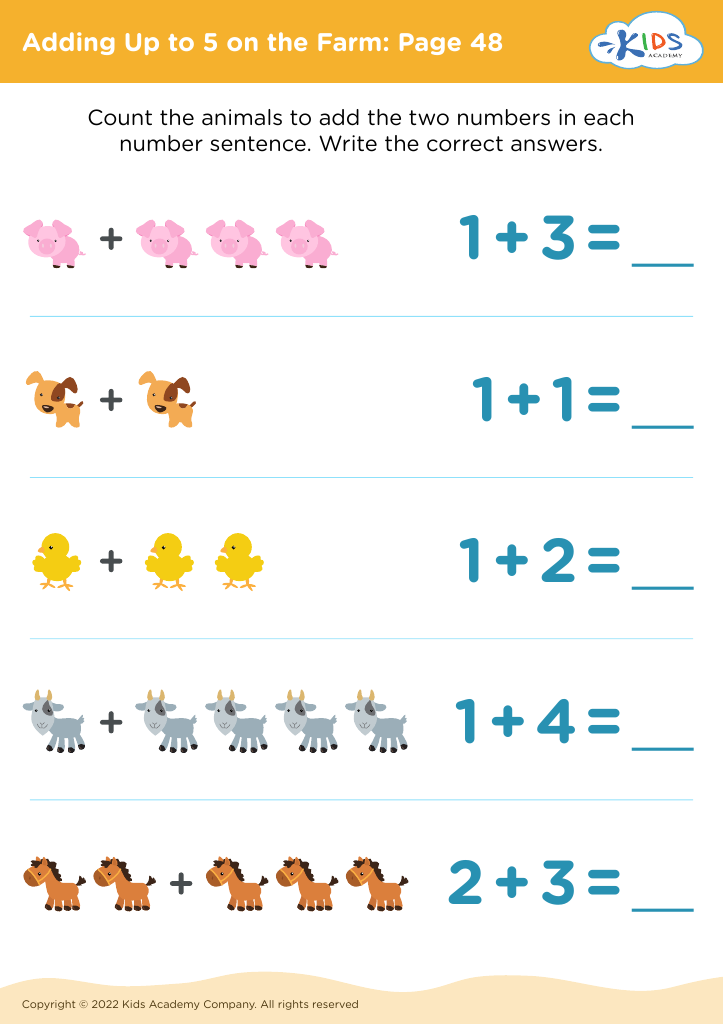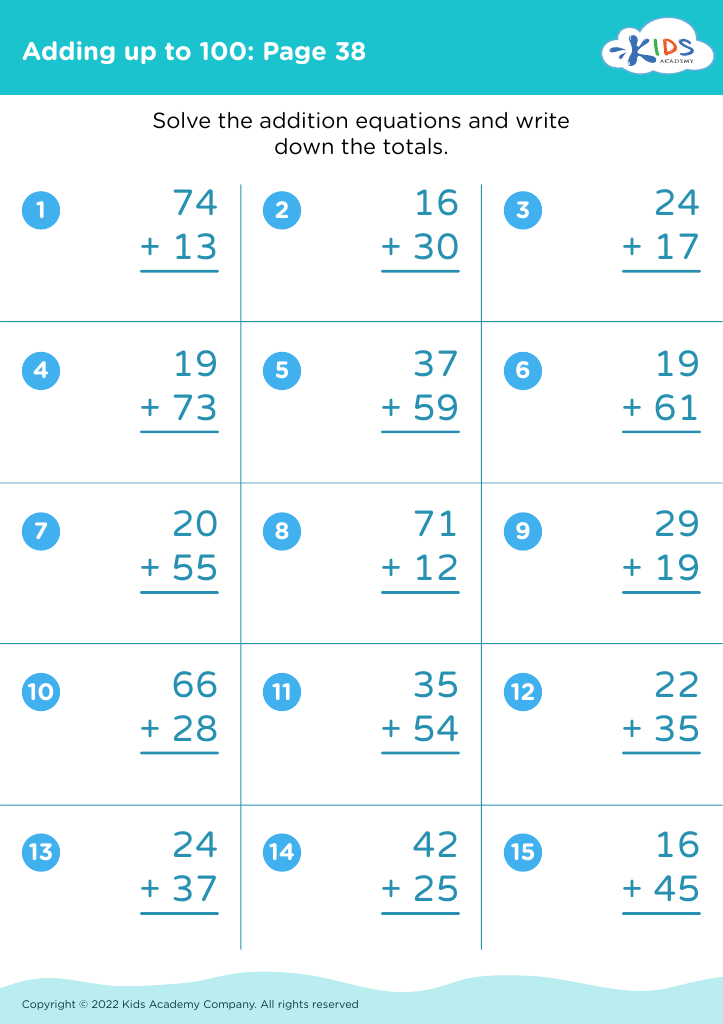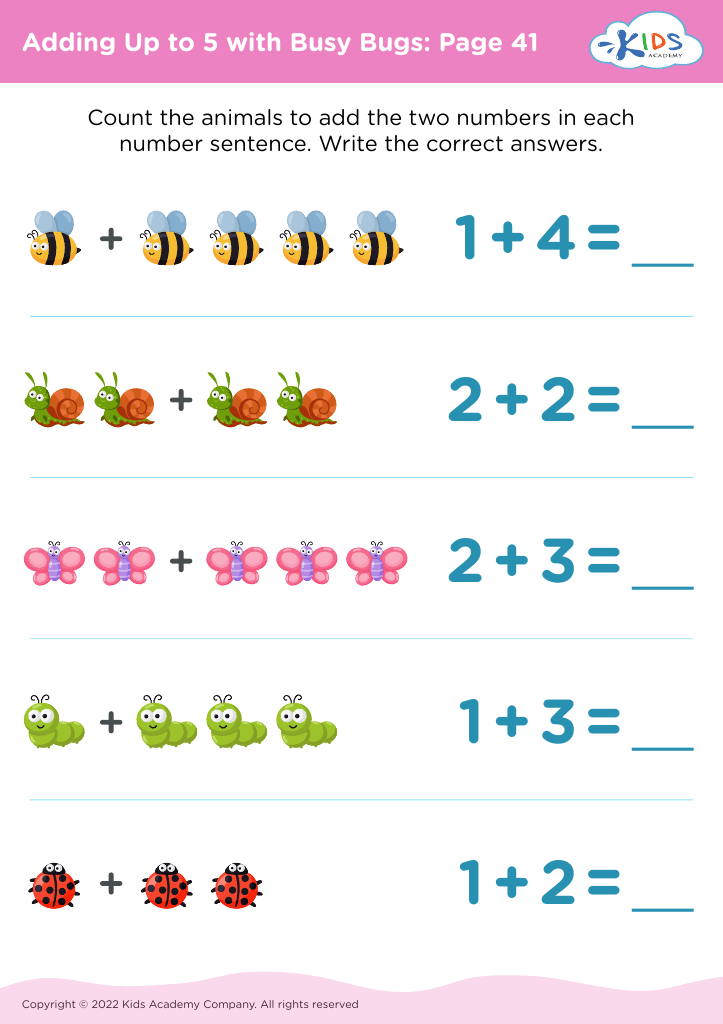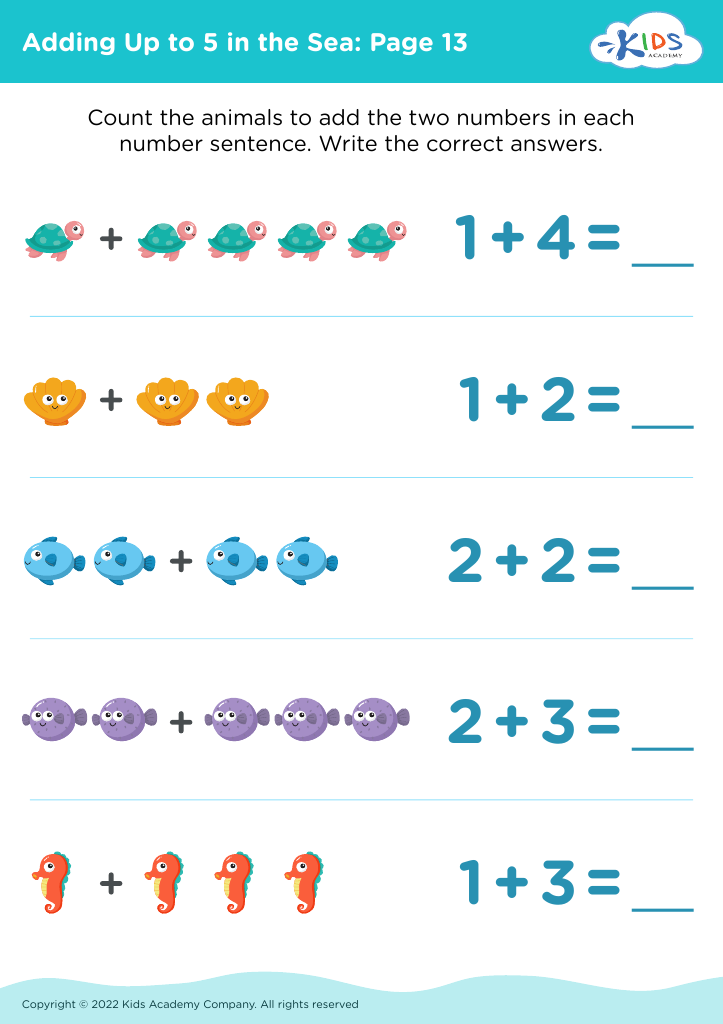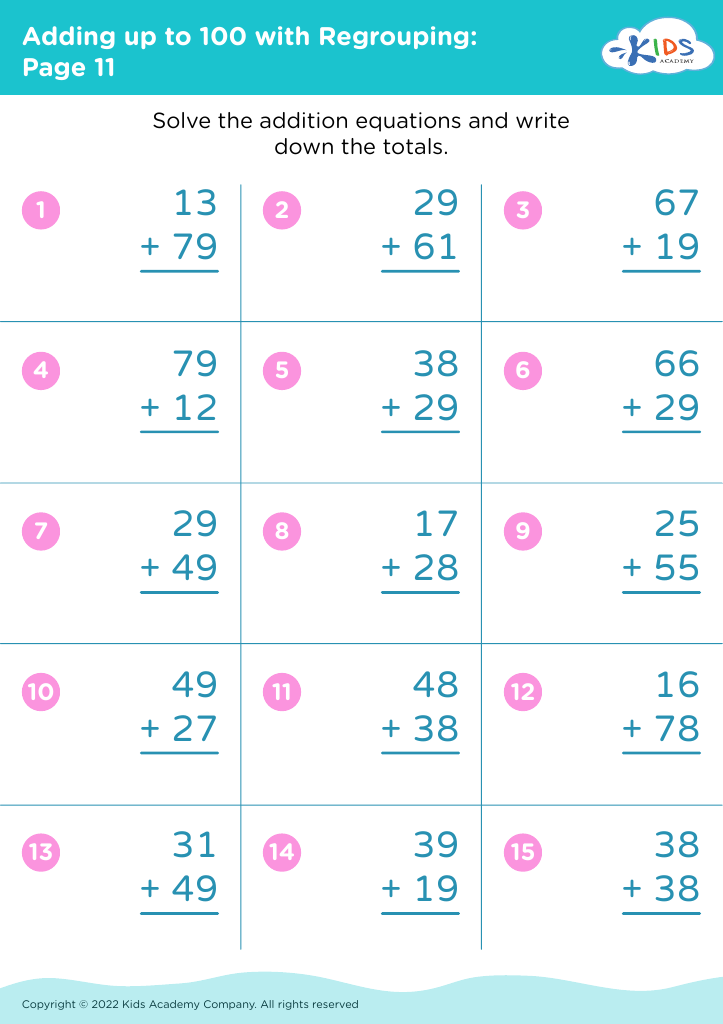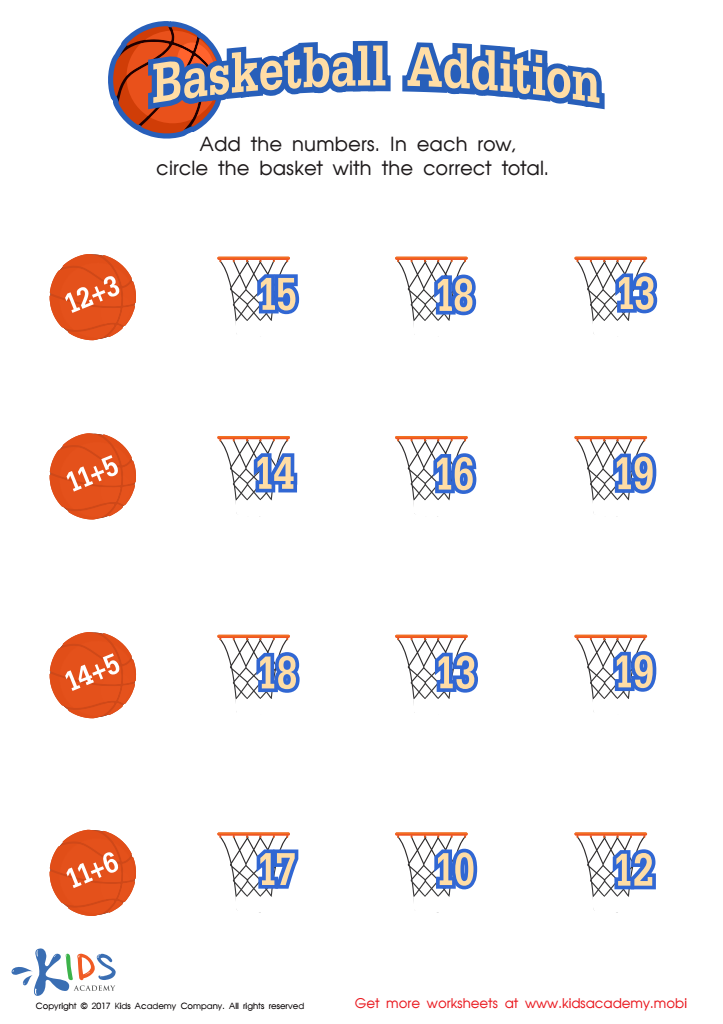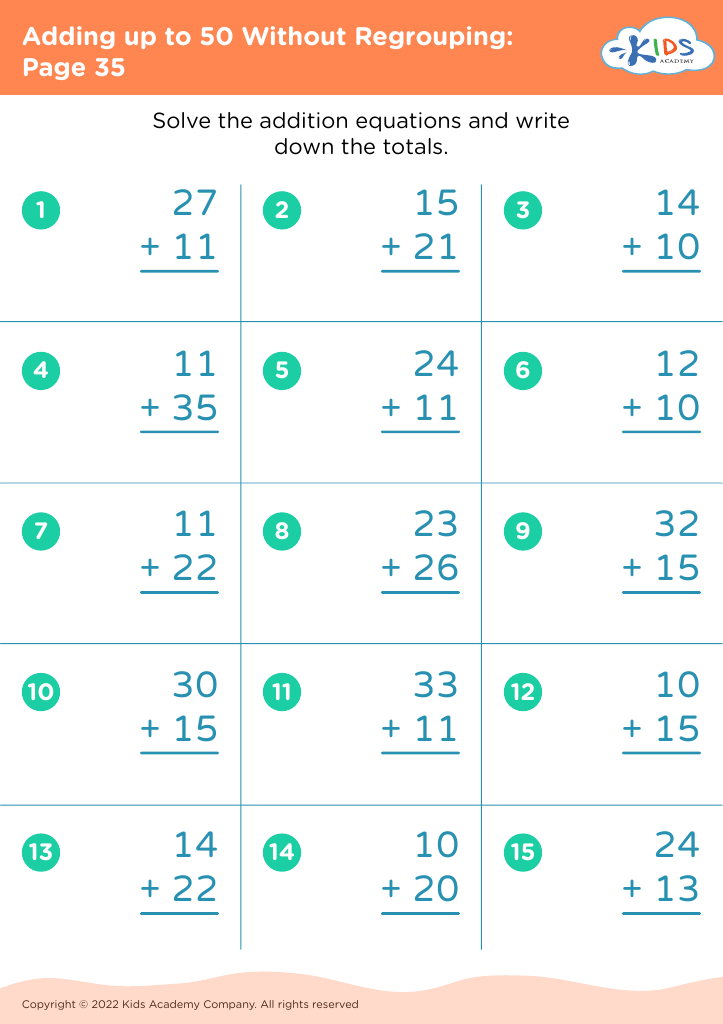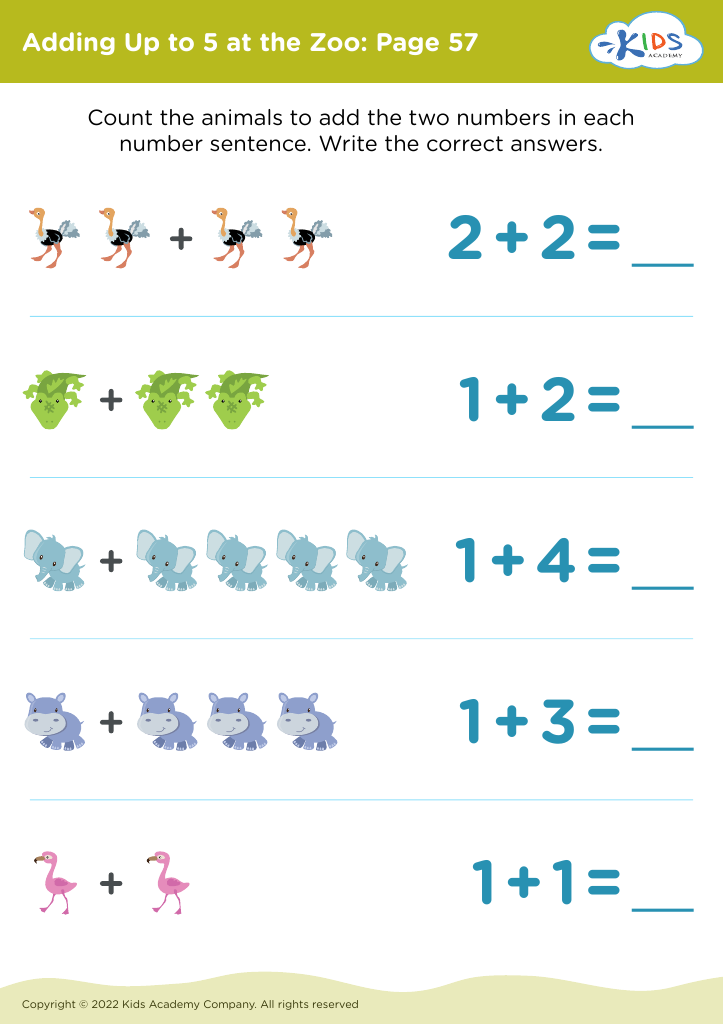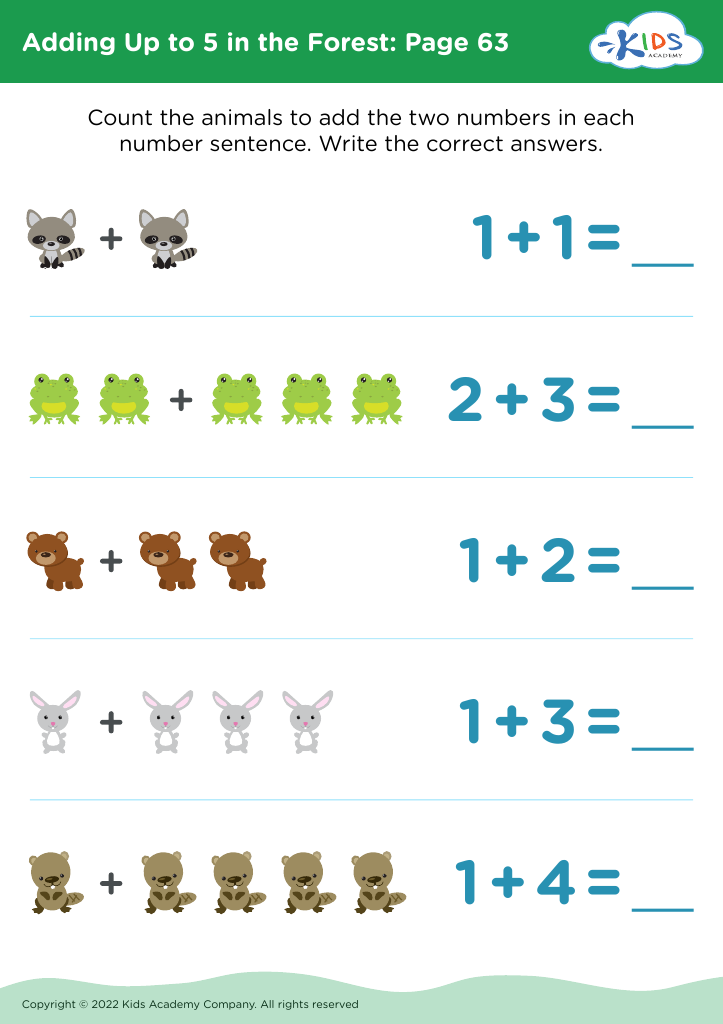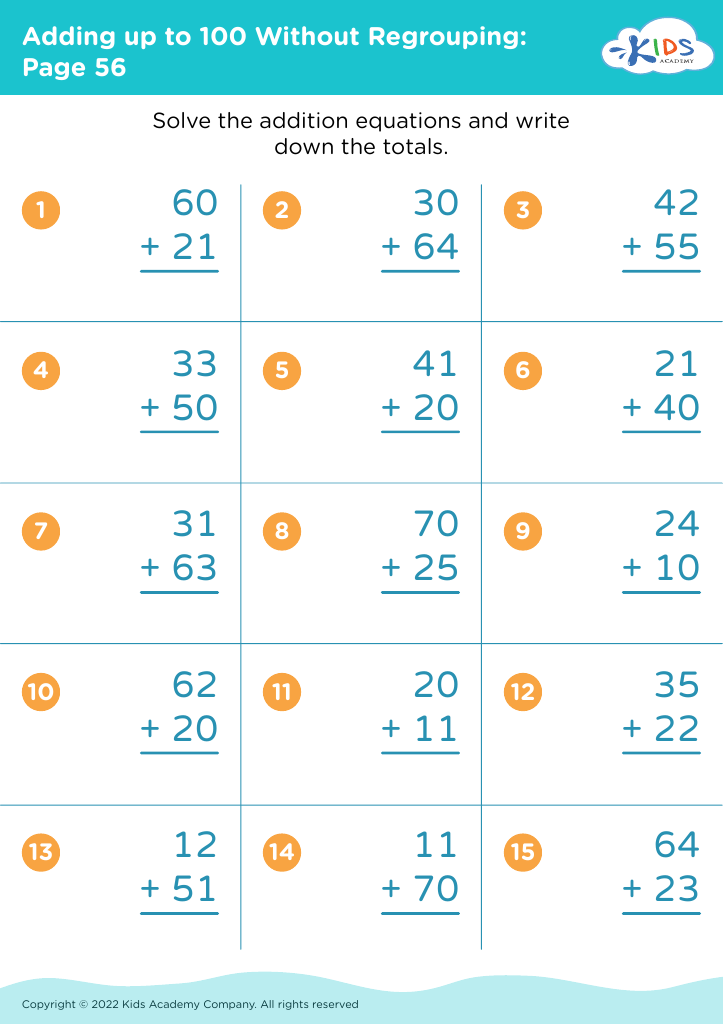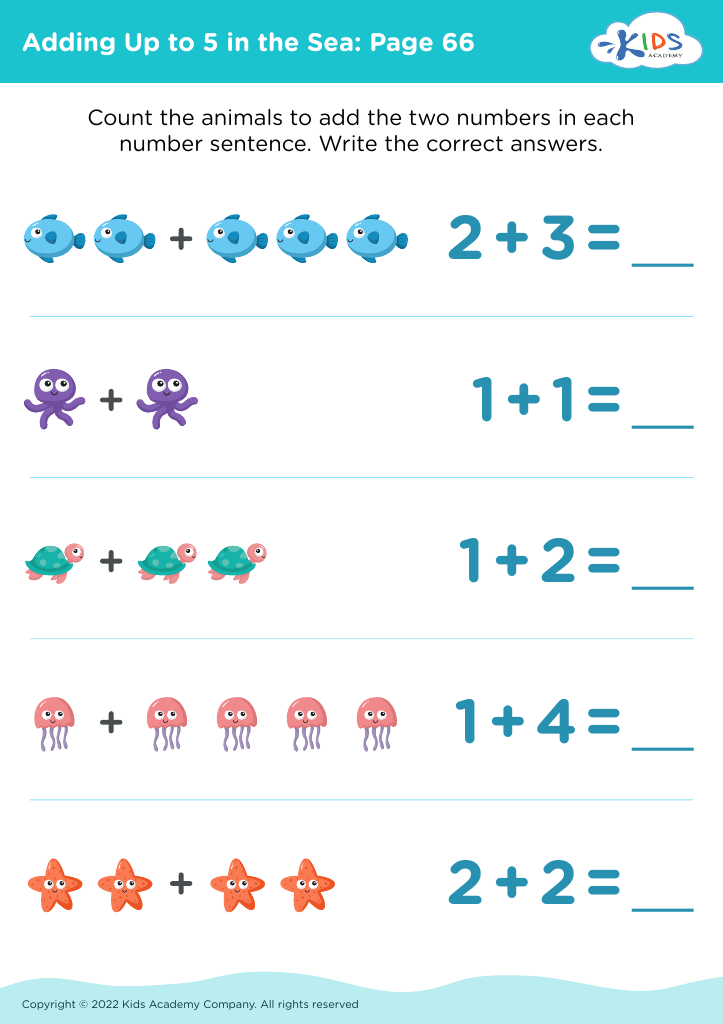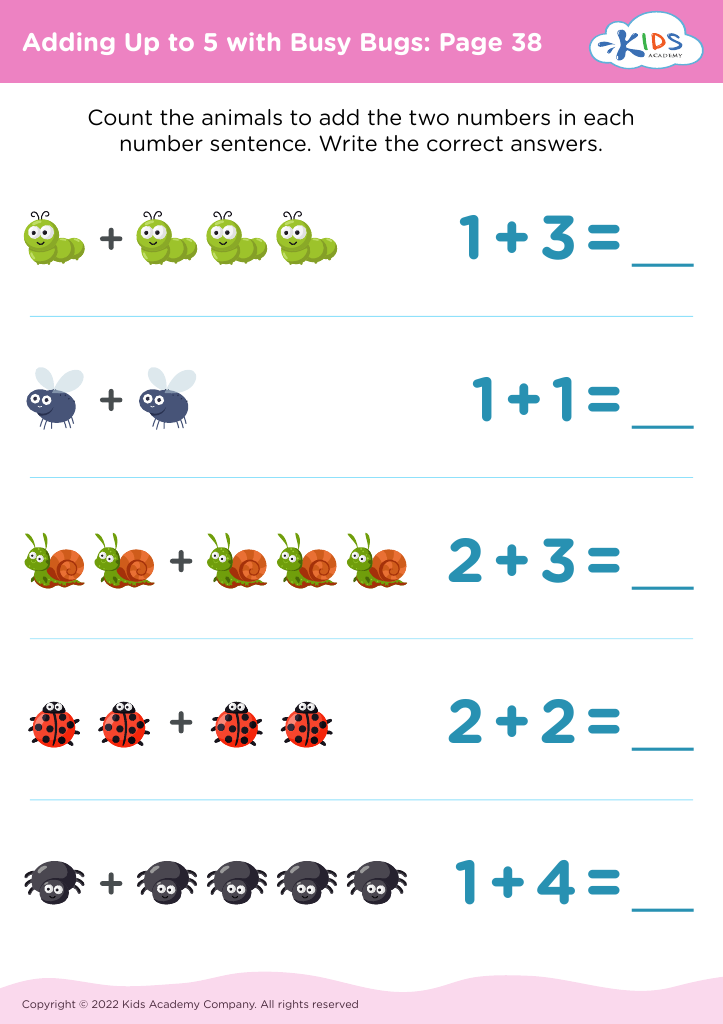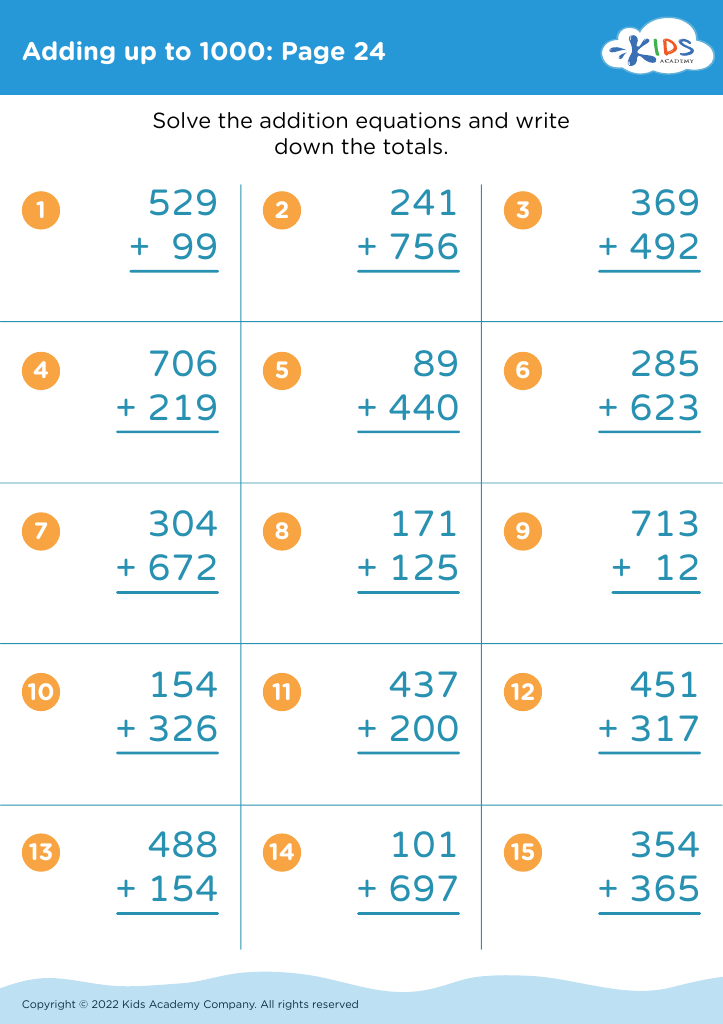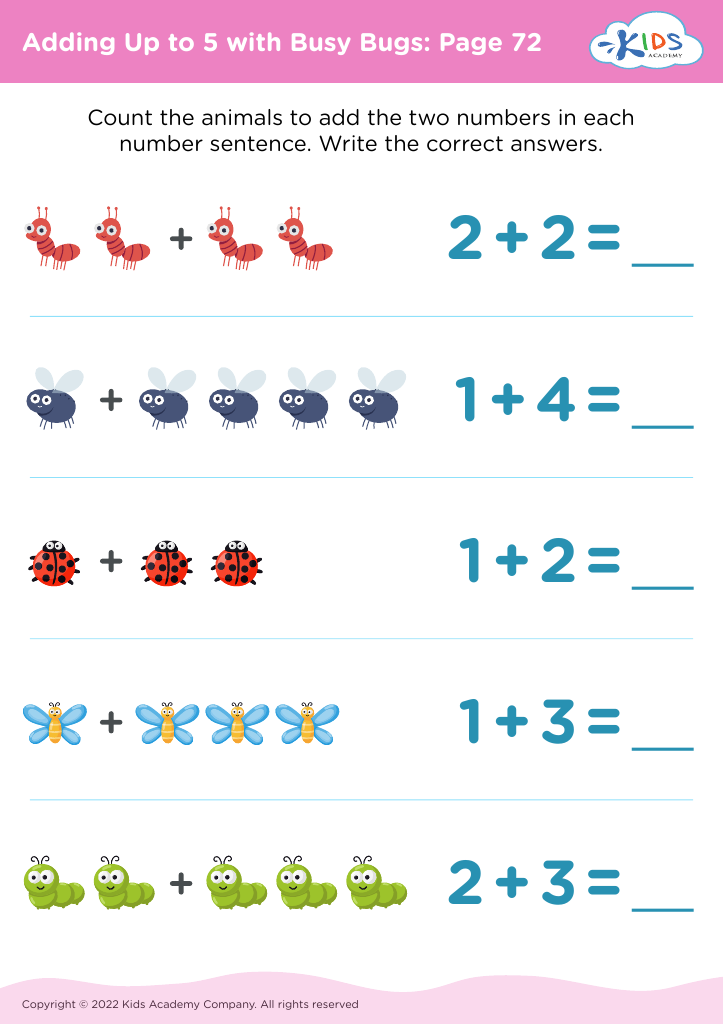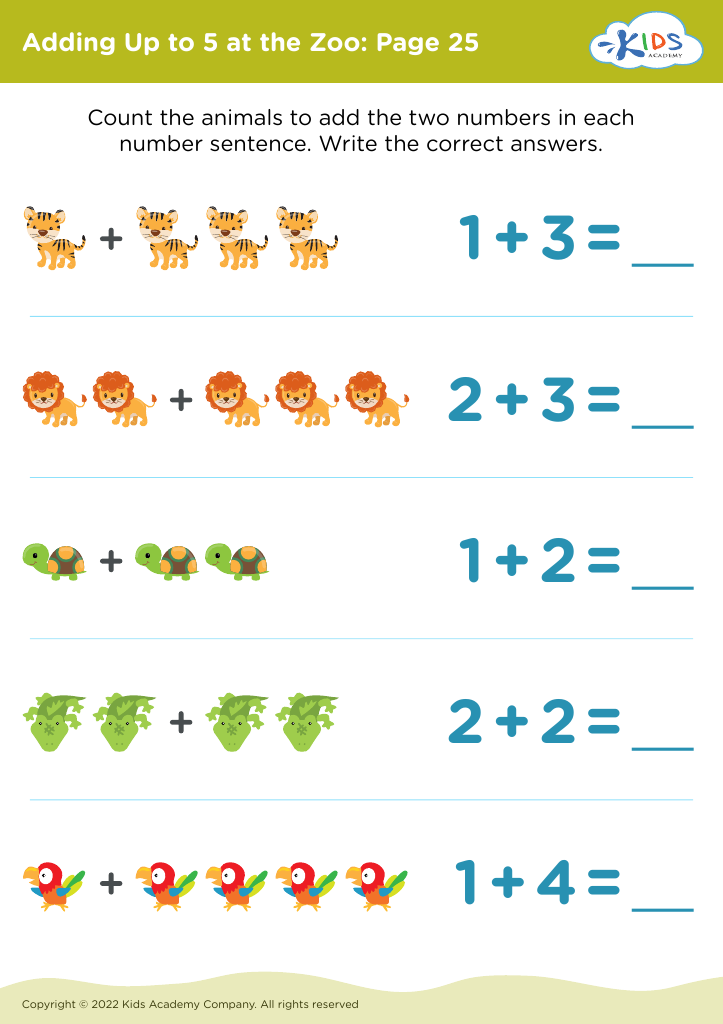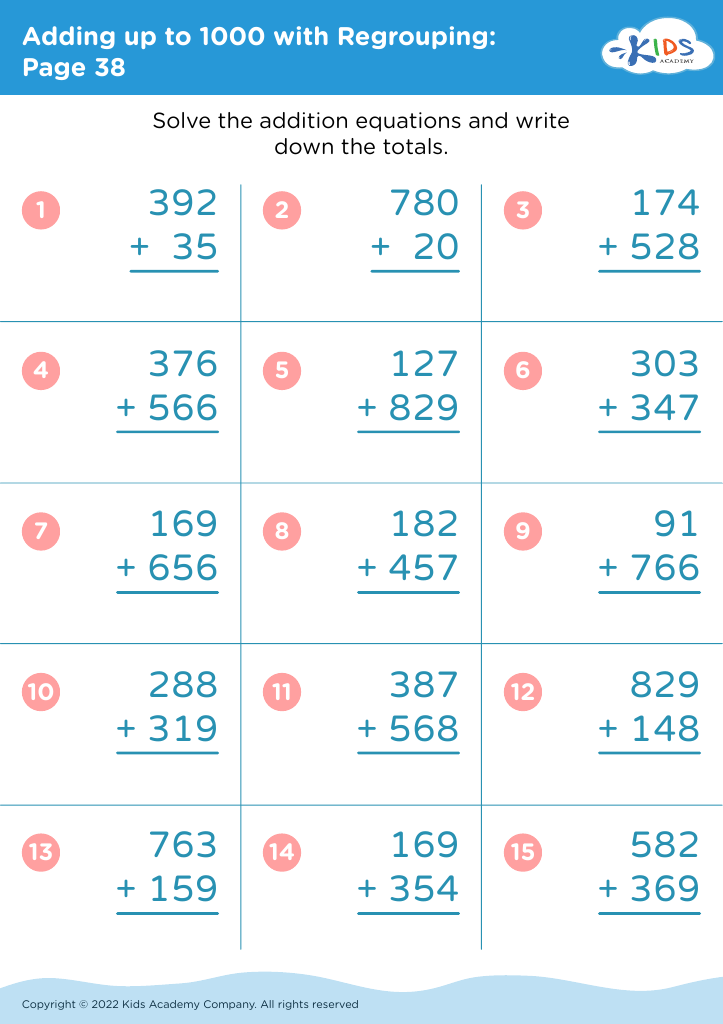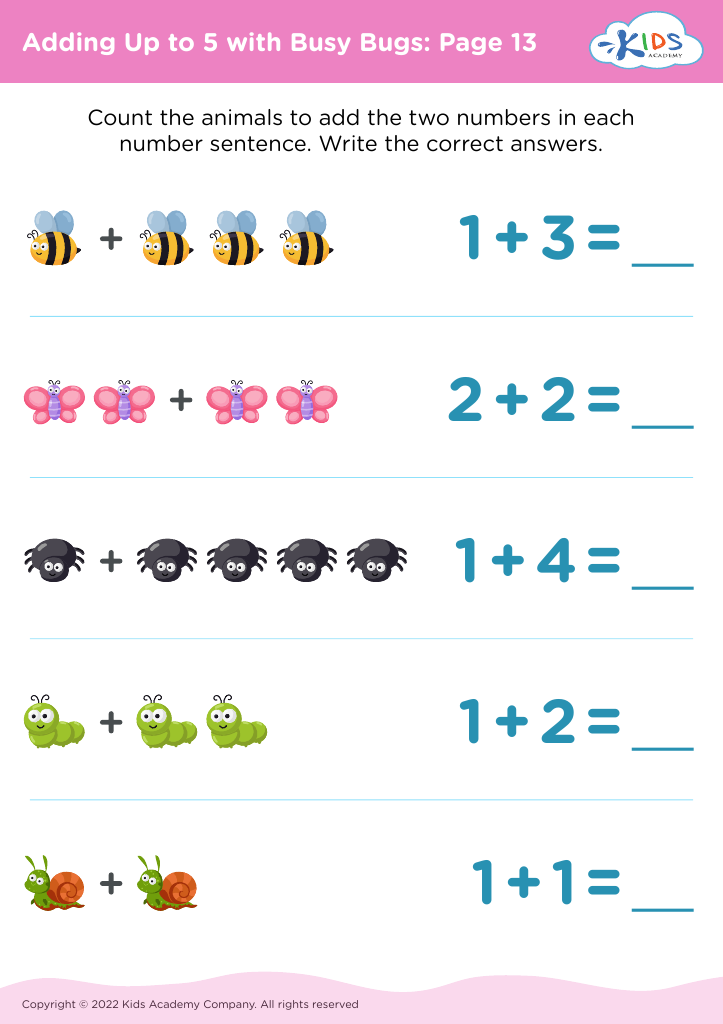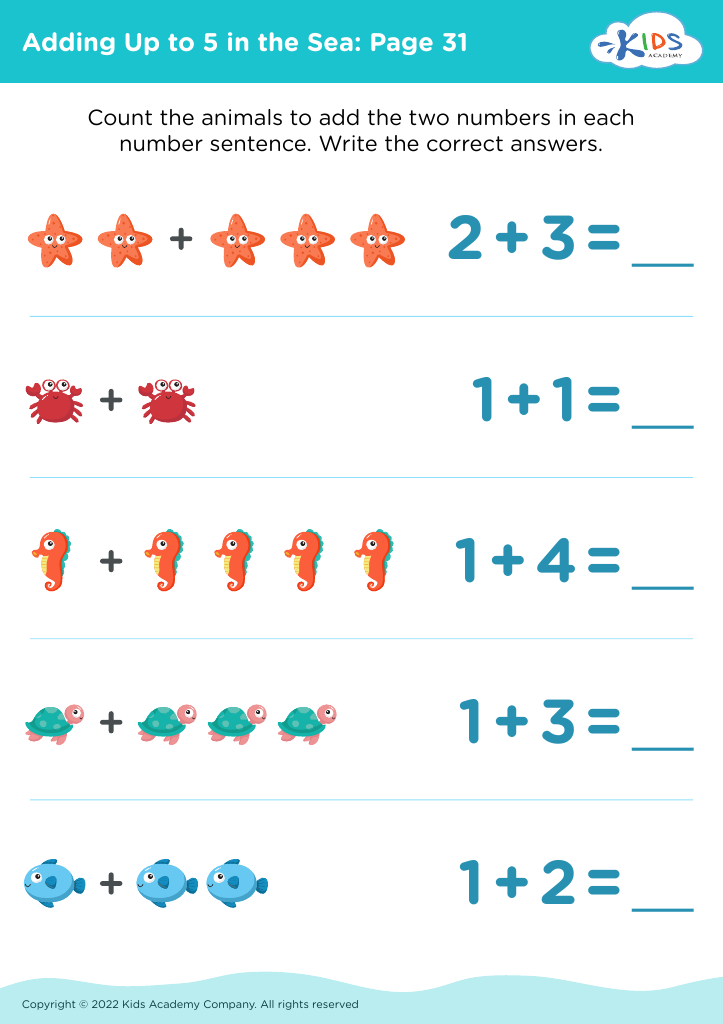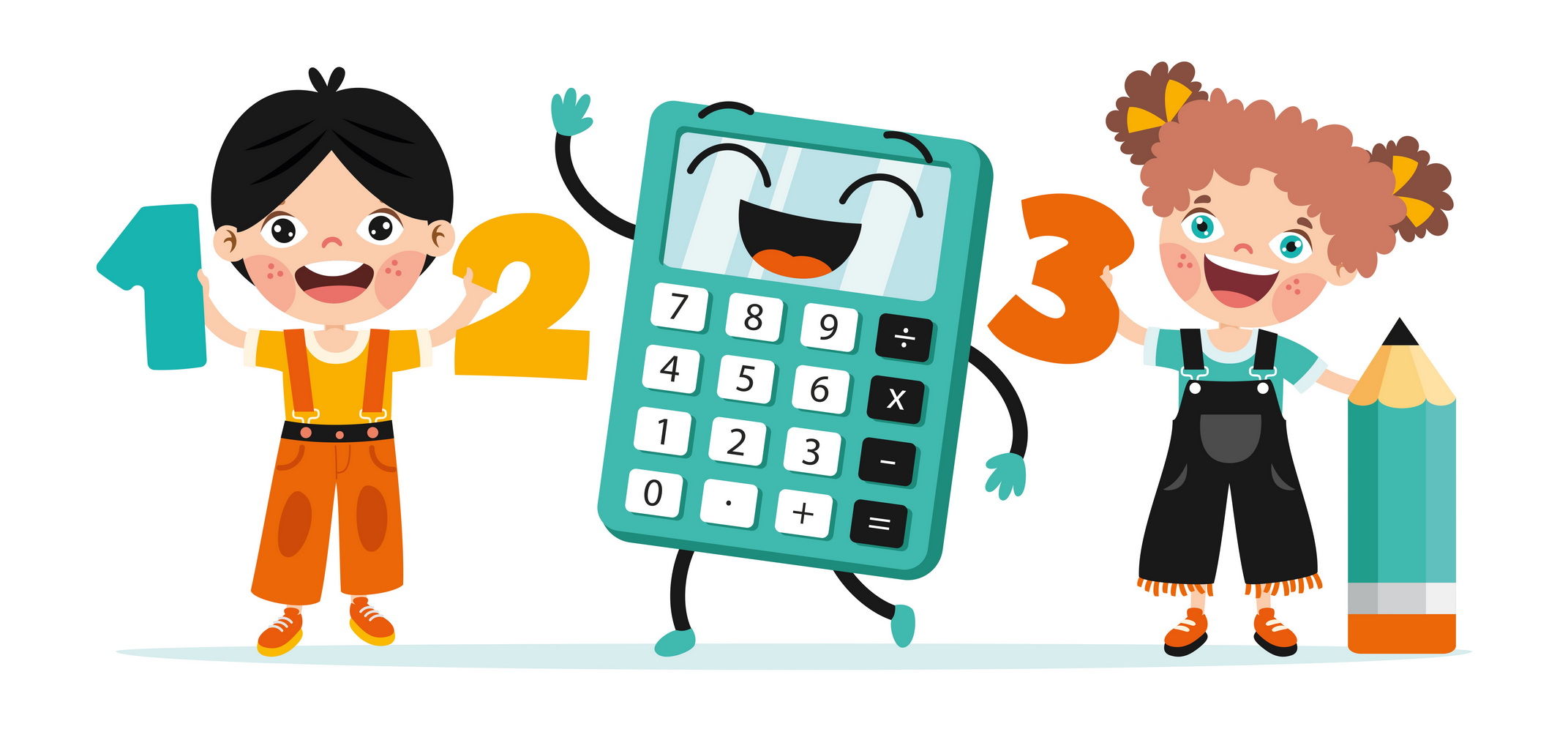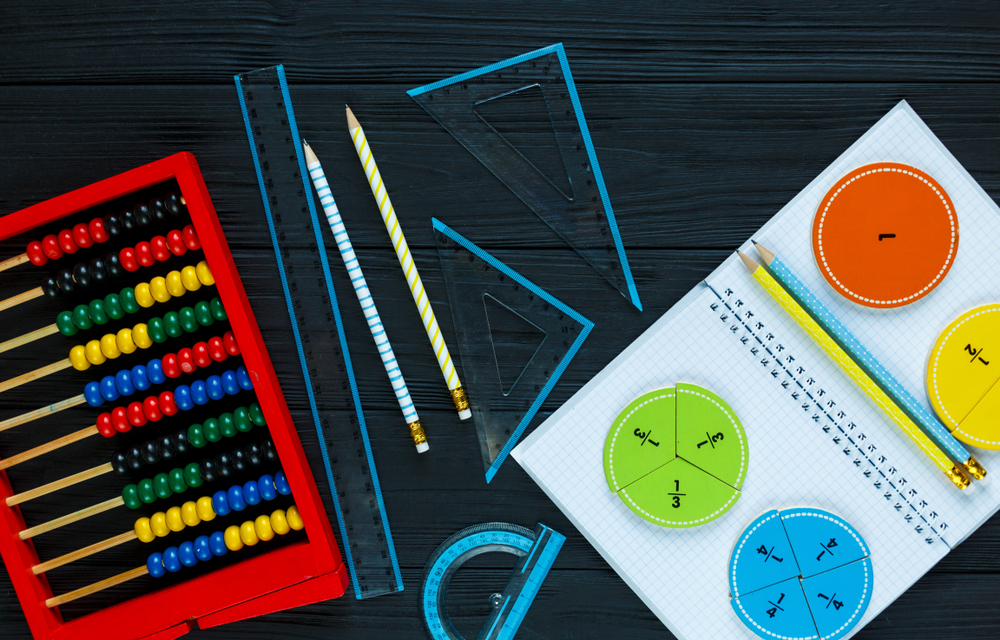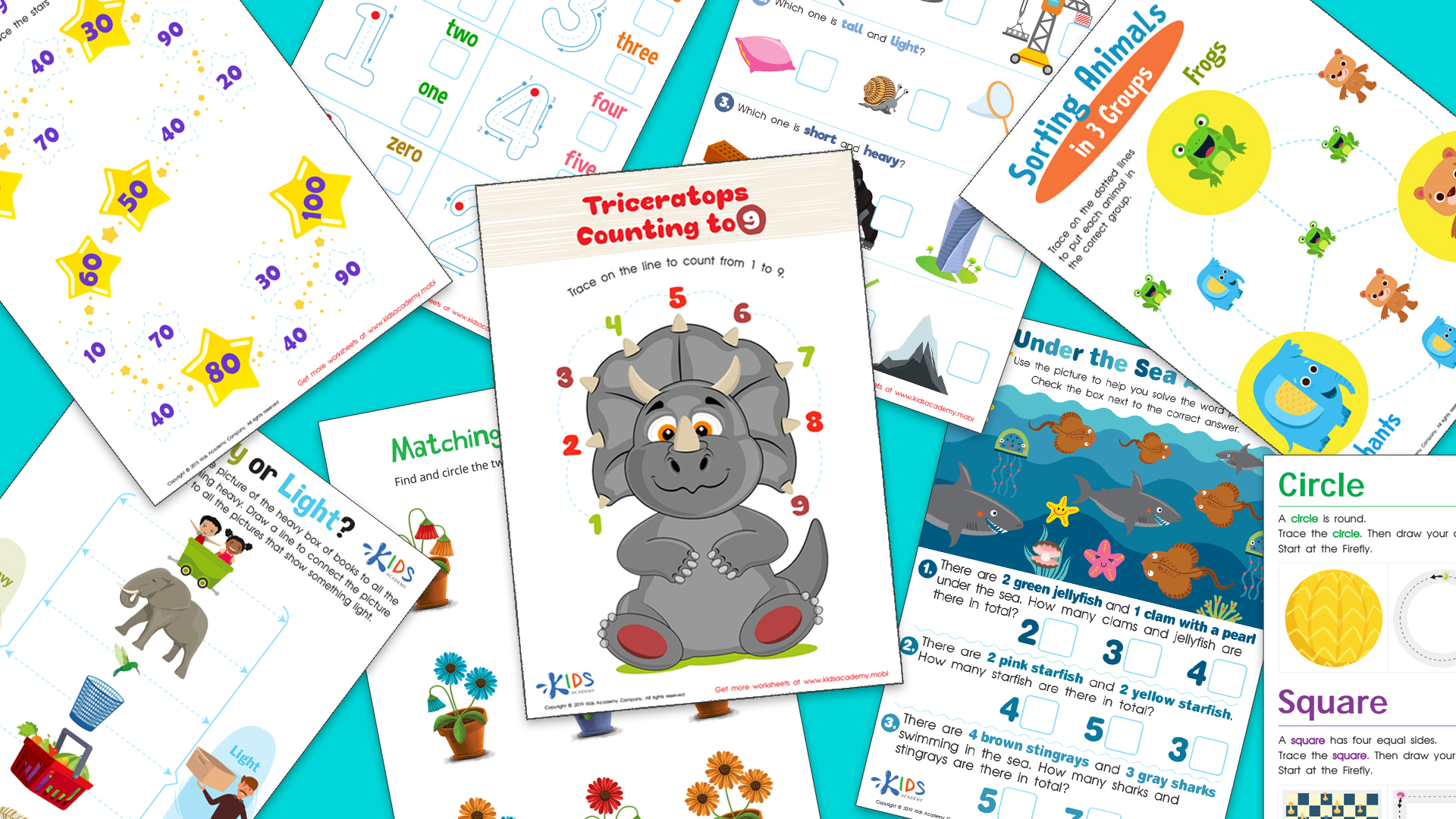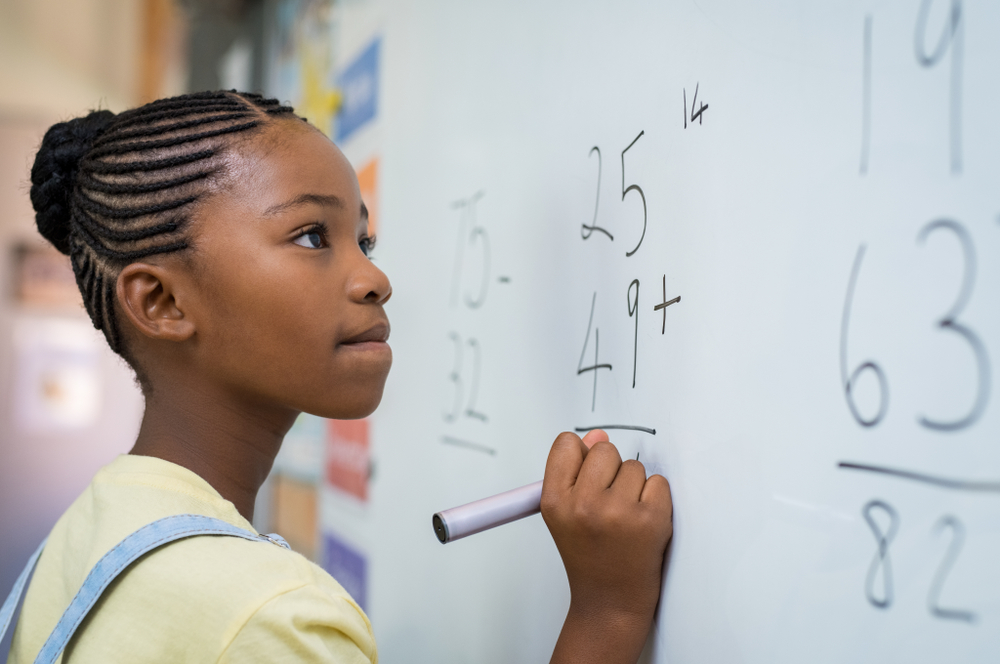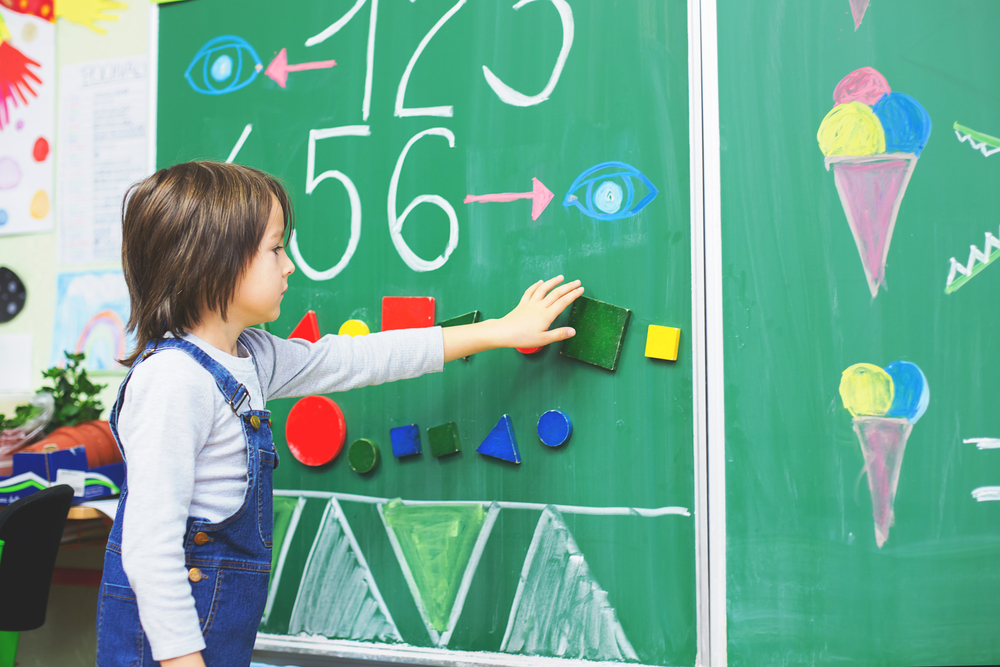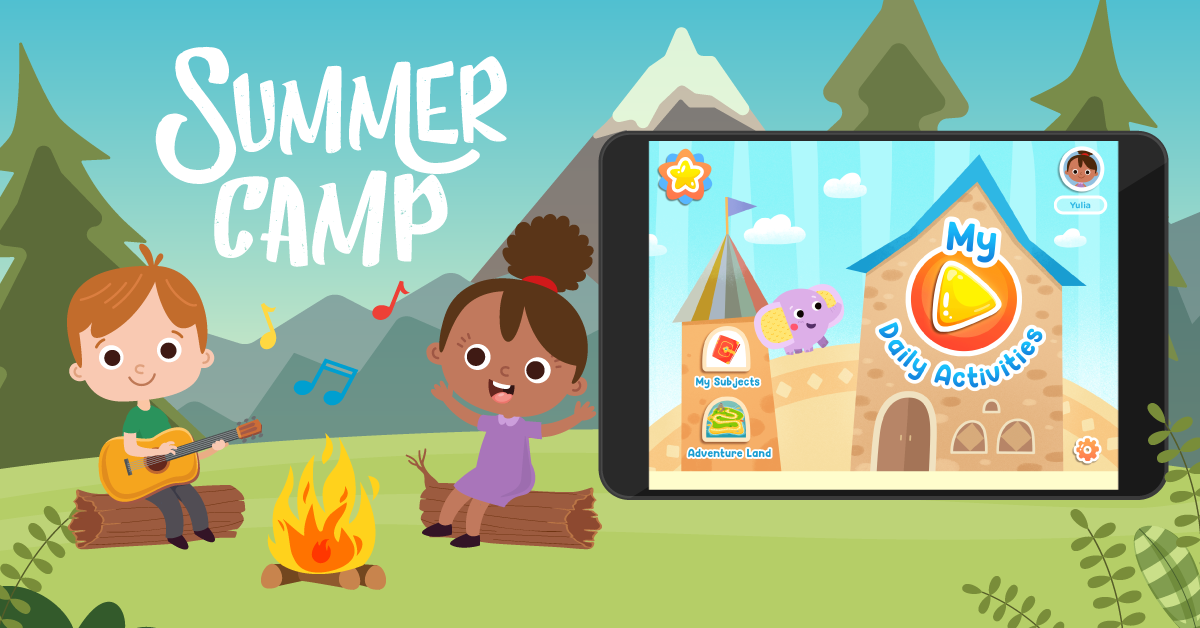Hand-eye Coordination Addition & Subtraction Worksheets for Ages 5-7
29 filtered results
-
From - To
Enhance your child's early math skills with our engaging Hand-eye Coordination Addition & Subtraction Worksheets designed for ages 5-7. These worksheets not only foster mathematical understanding but also improve essential hand-eye coordination skills. Each activity is crafted to make learning enjoyable, combining fun visuals with interactive tasks that motivate young learners. Ideal for both classroom and home settings, these worksheets help children practice addition and subtraction while developing fine motor skills. Perfect for preschool and early elementary learners, our resources simplify concepts and encourage a love for math. Get started today to set your child on the path to success!
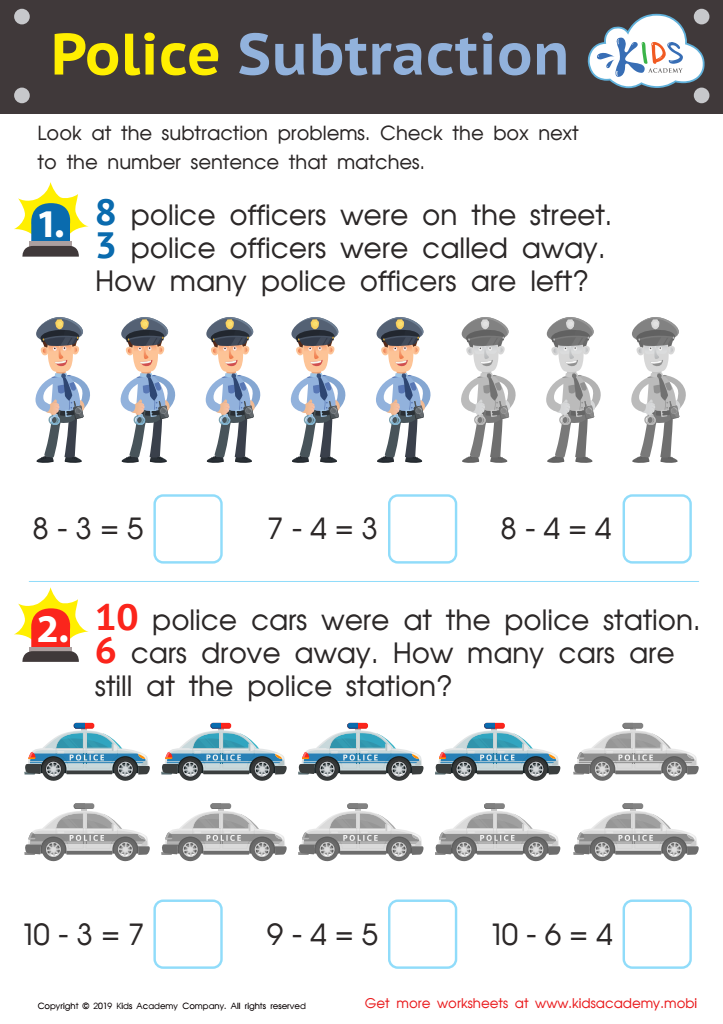

Police Subtraction Worksheet
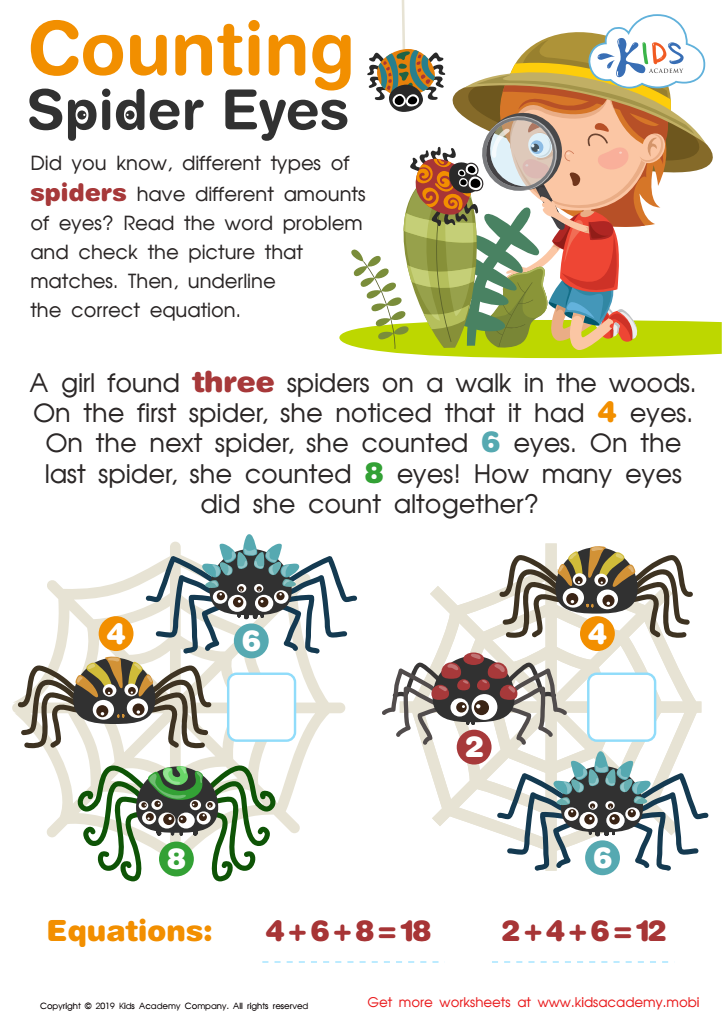

Counting Spider Eyes Worksheet
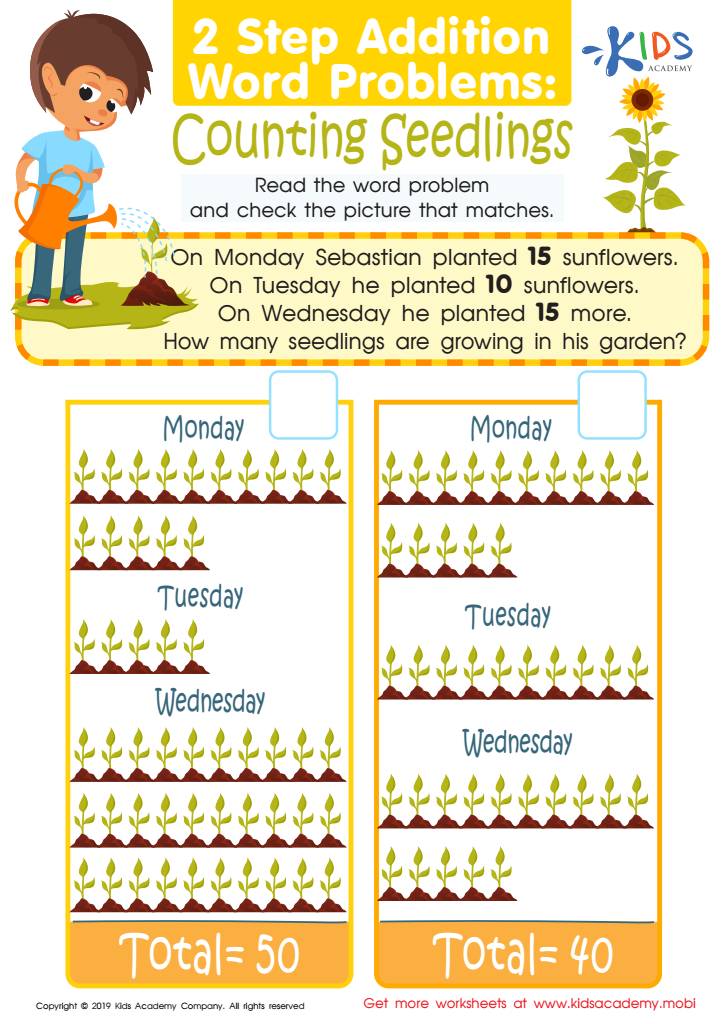

Counting Seedlings Worksheet


Adding up With Water Worksheet
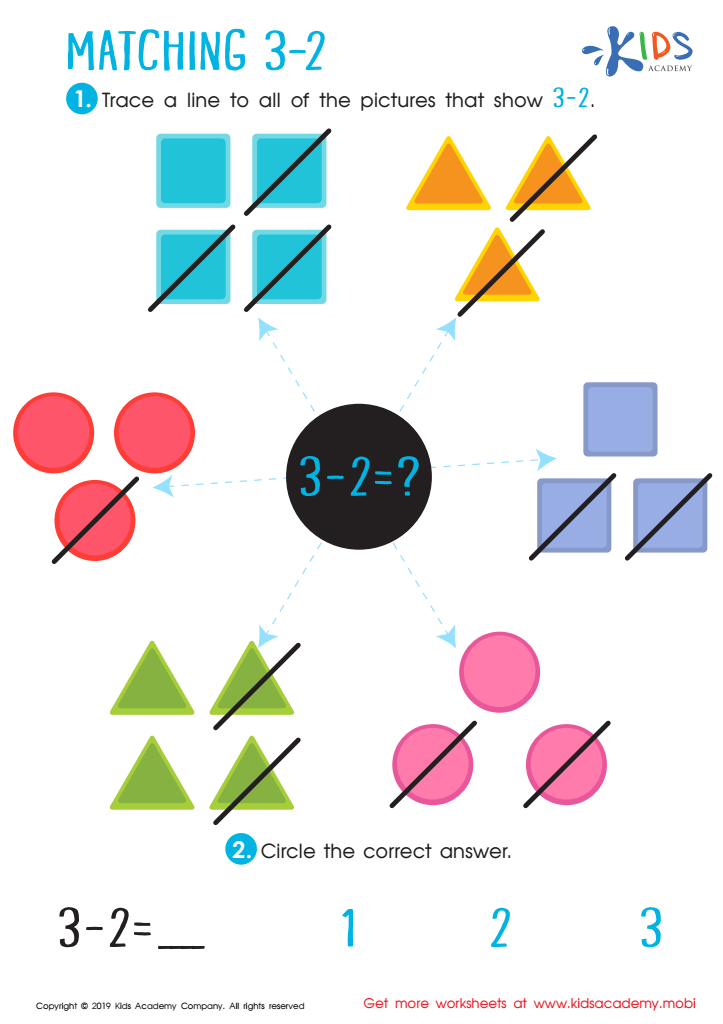

Matching 3-2 Worksheet
Hand-eye coordination is a crucial skill that influences a child's ability to perform various everyday tasks, including writing, cutting, and playing sports. For children aged 5-7, developing this coordination is particularly important because it lays the groundwork for more advanced skills in both academic and physical activities. Incorporating hand-eye coordination activities, like manipulatives for addition and subtraction, can significantly enhance a child's understanding of these foundational math concepts.
Engaging children in tactile, kinesthetic learning experiences helps reinforce their mathematical understanding while improving fine motor skills. When children manipulate objects—such as counting blocks or using beads— they gain a concrete understanding of numbers and their relationships. This hands-on approach also makes math less intimidating and more enjoyable, fostering a positive attitude toward learning.
Moreover, developing strong hand-eye coordination at an early age benefits other aspects of learning, such as reading and writing. It enhances focus, spatial awareness, and concentration—skills that are essential across subjects. By combining coordination activities with math learning, parents and teachers not only encourage a fundamental grasp of addition and subtraction but also promote overall cognitive and physical development, setting children up for success in their educational journey.
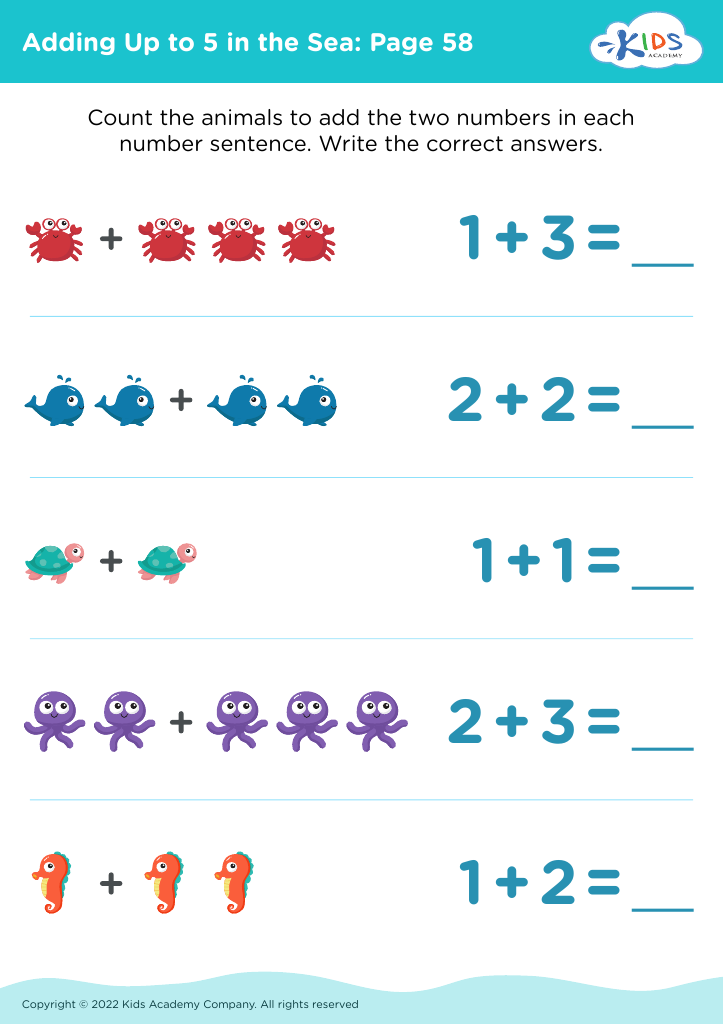

 Assign to My Students
Assign to My Students
